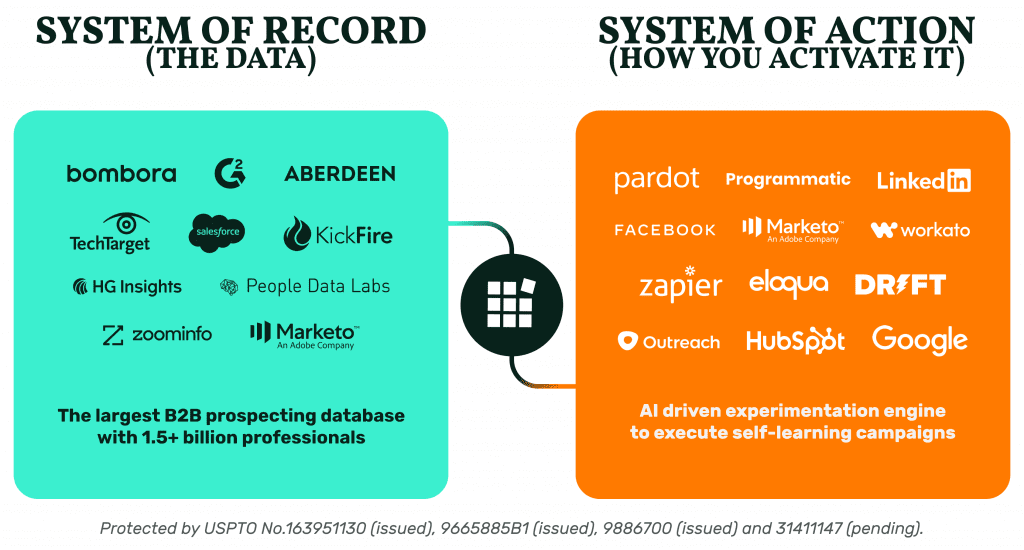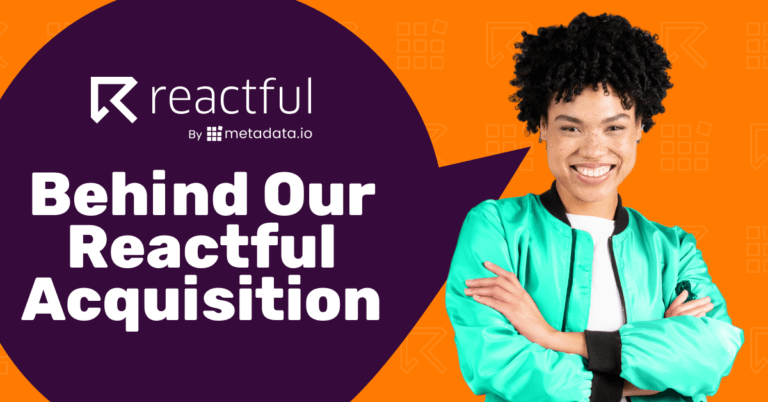6 Reasons Why You Shouldn’t Buy Metadata
Hey there.
If you’re reading this, you probably fit the Metadata audience. If we’re lucky, you might even fit our ICP. (If you don’t, we don’t hold it against you.)
Instead of just selling you on all things Metadata, we want to take this space to give an honest (if not unbiased) breakdown of when it makes sense to buy Metadata—and when it doesn’t.
We honestly believe that most demand gen teams will see a major impact by using Metadata. But, if I’ve learned anything from BANT and living in Chicago, it’s that there’s a season to everything.
Our goal for this guide is to let you accurately gauge whether you’re in the right season for Metadata. If you are, great—let’s talk. If you’re not, keep coming back here to talk shop.
We’ll spare you the pitch slap.
1. You don’t spend (or aren’t planning to spend) $20k/month+ in paid social ads
Why is money talk always so uncomfortable?
If you’re not spending at least $20k every month in paid social ads, Metadata might not be the right fit just yet. And, no, it’s not because we want you to spend more (our pricing isn’t based on a cut of your ad spend).
It’s for two other, semi-related reasons:
First, we know that getting truly experimental with your social ads requires a good chunk of change so that you can get statistical significance (and maybe even get a little funky with it as you try new things out).
The $20k mark isn’t arbitrary: we’ve found that our most innovative customers invest at least $50k to actually learn something (and then do something with what they’ve learned).
Based on our work with these customers, we recommend that you give every experiment at least 2x the spend of your target cost-per-Lead.
In a phrase: higher spend matched with experimentation means you can improve your messaging, your targeting, and your ad creative.
Second, and a little more simply, we don’t want you to have to pay 40%+ of your total ad spend on our platform (pricing starts at $3,950/month). We’re marketers, too. We wouldn’t spend 40% of our ad budget on a platform, and we want what’s best for you.
The Metadata price tag is well worth the outcome, but only if you have the ad spend to support experimentation.
2. You don’t have the time (or resources) to refresh your ad creative and content
You know how you always hear the same Ziprecruiter ad read on every podcast you listen to?
Don’t do that to your audience with your campaigns either.
Letting your ad creative and content go stale will cost you, and you won’t get the results you’re looking for out of your paid campaigns.
Whether they’re in-house, from an agency, or just a really great freelancer, you need access to copywriters and designers who can help you consistently refresh your campaigns.
Without the updates, you’ll exhaust your audience instead of educating and engaging them.
To keep your campaigns fresh, we follow a three-part testing philosophy called the 3 As:
- Audiences. This is where we help our customers start testing, since targeting is the most important part of this three-part equation. We figure out which audiences are converting and which audiences aren’t by looking at our data sources and how you’re building your targeting.
- Ads. Once we find which audiences are converting, you can start testing different ad variations. We recommend testing the ad concept (the design), variations on the concept (does this red background work better than that blue background?), and then the copy and CTA. Having a wide range of ad creatives at your disposal means you’ll be able to sustain a higher daily budget as you scale your experiments.
- Assets. This is the actual content offer that you’re promoting in your ads. We exhaust testing out targeting and ad creatives first before recommending that you create new content—and you can repurpose your existing content so you don’t always have to come up with new content offers for campaigns.
3. You care more about lead quantity than quality
Say you want to get as many leads as you can with a bunch of different ads (or blasting your budget at the same ad creatives).
We’re not here to tell you how to run your marketing, but we can tell you one thing: you don’t really need an ABM or demand gen platform for that approach. You can do it natively in the social ad platforms you’re using.
Here’s why we believe in quality over quantity: when a customer first starts using Metadata, often their lead volume goes down and their CPL goes up.
It freaks customers out.
But, with time, they see that better targeting with Metadata means they’re generating much higher quality leads at a lower cost-per-MQL. Even if the cost-per-Lead is a little higher. (Don’t believe me? Check out our conversation with FiveTran.)
Higher quality leads for your sales team means more conversions to pipeline and revenue.
It’s why one of our main metrics for assessing ROI with Metadata is looking at Lead-to-Opportunity and Lead-to-Customer conversion rates before and after implementing our platform.
Long story, short: if you’re jamming your funnel with garbage that doesn’t convert, wouldn’t you want to pay more if you knew these leads would actually convert to pipeline and revenue?
4. You’re looking for an all-in-one ABM solution
First: Metadata is not an all-in-one solution for ABM. Second: an all-in-one ABM solution doesn’t actually exist.
It’s not that we don’t believe in ABM, exactly. It’s more that we think of ABM as a marketing approach, not a marketing technology. You shouldn’t be limited by what an ABM platform can or cannot do. Every marketer has different requirements, so to think that there’s an all-in-one platform that will do everything you need it to is borderline insane.
Side note as an example: G2’s “ABM” category has a ton of subcategories for each tool, including targeting, advertising, tracking, gifting, and more.
These are some of the elements ABM platforms tackle, to varying degrees of success:
- Account selection and prioritization. Figure out which accounts are a good fit based on historical CRM data, firmographic data, and intent data if it’s included in the platform. With your account lists created, these platforms often help you prioritize accounts. This is what we see as the biggest strength of ABM platforms.
- Intent data. Some ABM platforms have their own, while others rely on third-party data pulled in for your subscription. You can also use standalone tools, like G2 or Bombora, to gather this intent data on your own (we don’t have intent data, but we integrate with both of these tools). We encourage marketers to test out different intent data sources, but you should know that having intent data doesn’t automatically mean you will see value from it.
- Activation and advertising. This is where Metadata shines. ABM platforms typically focus on display ads with limited paid social capabilities, so activating intent data for your target audiences is a more manual approach. In contrast, Metadata helps you launch and automate ad campaigns based on intent data (and a whole lot of other data sources) so you don’t have to manually do all of this on your own. Other ABM platforms rarely offer experimentation, but with Metadata you can test what works and let the platform reallocate your budget for you.
- Reporting. ABM platforms usually report on engagement, with the assumption that more engagement = more revenue. But account engagement doesn’t always have a direct line to revenue, so the best marketers are still looking for the answers that will help them build pipeline and close deals.
You might have already gotten the sense that we don’t think of Metadata as an ABM platform (it’s not).
Instead, we look at the Metadata platform as an operating system for B2B marketers.
Metadata sits in between, not on top of, what you have in place.

We connect your systems of record to your systems of action so you can get more use out of your existing technology and advertising channels.
5. You’re just looking for demo requests or trial signups
Everyone (including us) wants qualified hand-raisers.
If only it were that easy.
Only about 1% of your target audience is actively looking to buy whatever you’re selling, so lighting up “Request an Intro” across all your (cold) audiences just isn’t going to work.
Whether you believe in funnels or not, you need to be willing to educate your target audience on problems they may or may not be aware of.
That stands in stark contrast to blasting them with ads about why your company or product is better than any of the alternatives in the market.
More than 50 years ago, Eugene Schwartz tackled prospect awareness in his classic book Breakthrough Advertising. He breaks awareness down into five distinct phases:
- Most Aware: Your prospect knows your product, and only needs to know “the deal.”
- Product-Aware: Your prospect knows what you sell, but isn’t sure it’s right for them.
- Solution-Aware: Your prospect knows the result they want, but not that your product provides it.
- Problem-Aware: Your prospect senses they have a problem, but doesn’t know there’s a solution.
- Completely Unaware: No knowledge of anything except, perhaps, their own identity or opinion.
We typically use the three middle stages when we get prospects and customers up to speed with a winning approach to demand gen and account-based marketing.
Only by moving from problem to solution, and then from solution to product, can you get to the deal.
This takes time, budget, and a big investment in content. But it also means that when your audience is ready to buy, you’ve already made their shortlist.
6. You don’t want to experiment with your campaigns
Experimentation is usually challenging (and scary) for B2B marketers. Most avoid it.
You spend so much time fighting for new messaging, new designs, and new offers. You’re so confident it’s all going to land until it doesn’t.
It’s frustrating. It’s humbling. It sucks.
If you’re not experimenting because you’re too scared to fail, you’re looking at it the wrong way.
Experimenting with your campaigns helps prove marketing ROI and, even more importantly, prove you’re not wasting money.
It helps you quickly identify what’s working and what’s not. So you can double down on the experiments that do land and kill the ones that don’t.
By killing campaign experiments that don’t land, you get to learnings faster so you can apply them to your next campaign.
Sure, you can still use Metadata if you don’t want to experiment much with your campaigns. But you’ll 100% miss out on the most important of the platform and leave revenue on the table.


